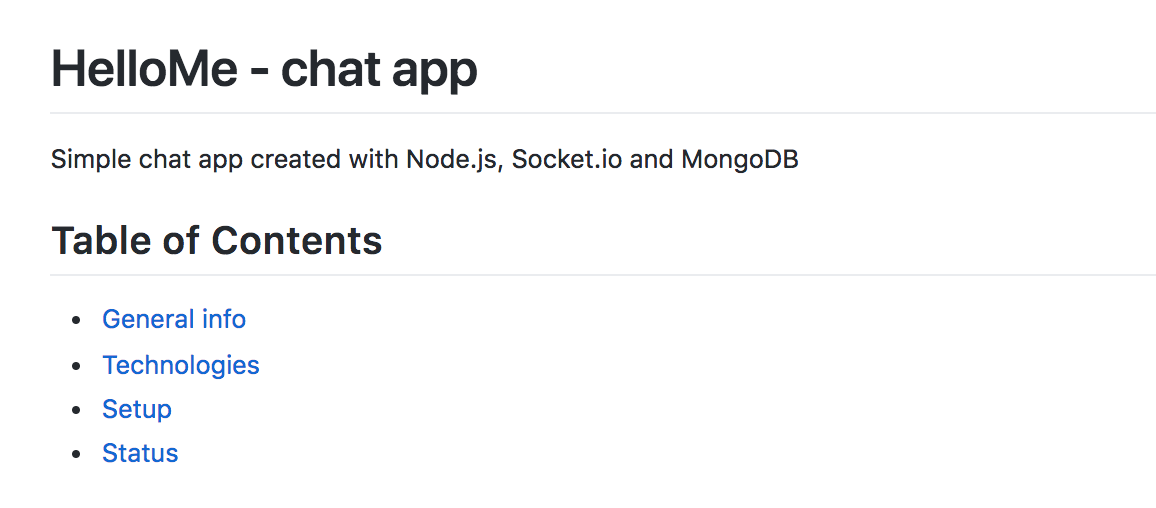Documentation.js Direction

Questions:
- Markdown or reST or Asciidoc or Asciidoctor?
- References: https://internals.rust-lang.org/t/rustdoc-restructuredtext-vs-markdown/356/11https://github.com/rust-lang/rust/issues/29474
- Markdown
- Pros
- More people know it already
- Lots of good parsers
- More documentation written in it
- Same as rustdoc, JSDoc
- Cons* No good way to interlink* Structure is arbitrary* No table standard
- Pros
- reST
- Pros
- Sphinx has lots of good documentation patterns
- Standard table syntax
- Lots of users: Sphinx is very very popular
- Cons
- Less popular
- Fewer parsers
- 'Hard to write', Directives behave strange, title syntax is annoying https://internals.rust-lang.org/t/rustdoc-restructuredtext-vs-markdown/356/18
- Pros
- Asciidoc
- Asciidoctor
- Pros
- 'Asciidoctor is Markdown compatible and supports its basic syntax.'
- Cons
- Implementation is only written in Ruby
- Pros
Personal take:
- drock is a greenfield so we don't have the upgrade problems of rust. That's a potential point in the reST/asciidoc direction
- But the super limited range of implementations of reST is very troubling. It sounds like people only really like reST in the contest of Sphinx
- Having a pure JS solution is really top of mind, I do not want, in any way, to need to rely on another lang for a parser. But Sphinx goes way in the other direction and requires Python. Maybe that's fine.
GitHub & Bitbucket. GitHub and Bitbucket still do not support the rendering of mathematical formulas, whether it is the default delimiters or other. Bitbucket Cloud / BCLOUD-11192 - Add LaTeX Support in MarkDown Documents (BB-12552) GitHub / markup - Rendering math equations. GitHub / markup - Support latex. The wizard takes advantage of the fact that GitHub allows img tags to occur in the README.md. Also, the wizard makes use of the popular trick of uploading images to GitHub by drag'n'dropping them in the issue area (as already mentioned in one of the answers in this thread). I am not too familiar with the lightweight markup language used by github when updating README files.Where are the resources which I can read up on how to write the appropriate markup syntax for my.
Markdown is a lightweight and easy-to-use syntax for styling all forms of writing on the GitHub platform.
What you will learn:

- How the Markdown format makes styled collaborative editing easy
- How Markdown differs from traditional formatting approaches
- How to use Markdown to format text
- How to leverage GitHub’s automatic Markdown rendering
- How to apply GitHub’s unique Markdown extensions

What is Markdown?
Markdown is a way to style text on the web. You control the display of the document; formatting words as bold or italic, adding images, and creating lists are just a few of the things we can do with Markdown. Mostly, Markdown is just regular text with a few non-alphabetic characters thrown in, like # or *.
You can use Markdown most places around GitHub:
- Comments in Issues and Pull Requests
- Files with the
.mdor.markdownextension
For more information, see “Writing on GitHub” in the GitHub Help.
Examples
Syntax guide

Here’s an overview of Markdown syntax that you can use anywhere on GitHub.com or in your own text files.
Headers
Emphasis
Lists
Unordered
Ordered
Images
Links
Github Md Markup Extension
Blockquotes
Inline code
GitHub Flavored Markdown
GitHub.com uses its own version of the Markdown syntax that provides an additional set of useful features, many of which make it easier to work with content on GitHub.com.
Note that some features of GitHub Flavored Markdown are only available in the descriptions and comments of Issues and Pull Requests. These include @mentions as well as references to SHA-1 hashes, Issues, and Pull Requests. Task Lists are also available in Gist comments and in Gist Markdown files.
Syntax highlighting
Here’s an example of how you can use syntax highlighting with GitHub Flavored Markdown:

You can also simply indent your code by four spaces:
Here’s an example of Python code without syntax highlighting:
Task Lists
If you include a task list in the first comment of an Issue, you will get a handy progress indicator in your issue list. It also works in Pull Requests!
Tables
You can create tables by assembling a list of words and dividing them with hyphens - (for the first row), and then separating each column with a pipe |:
Would become:
| First Header | Second Header |
|---|---|
| Content from cell 1 | Content from cell 2 |
| Content in the first column | Content in the second column |
SHA references
Any reference to a commit’s SHA-1 hash will be automatically converted into a link to that commit on GitHub.
Issue references within a repository
Any number that refers to an Issue or Pull Request will be automatically converted into a link.
Username @mentions
Typing an @ symbol, followed by a username, will notify that person to come and view the comment. This is called an “@mention”, because you’re mentioning the individual. You can also @mention teams within an organization.
Github Md Markup Program
Automatic linking for URLs
Github Md Markup Software
Any URL (like http://www.github.com/) will be automatically converted into a clickable link.
Strikethrough
Any word wrapped with two tildes (like ~~this~~) will appear crossed out.
Emoji
GitHub supports emoji!
To see a list of every image we support, check out the Emoji Cheat Sheet.
Last updated Jan 15, 2014
